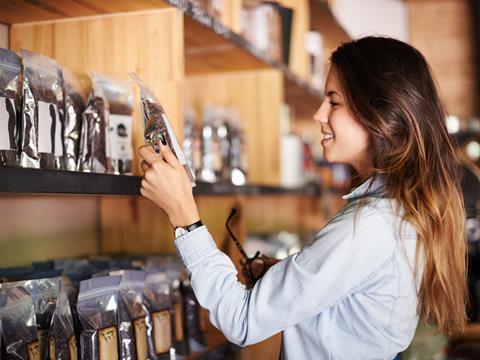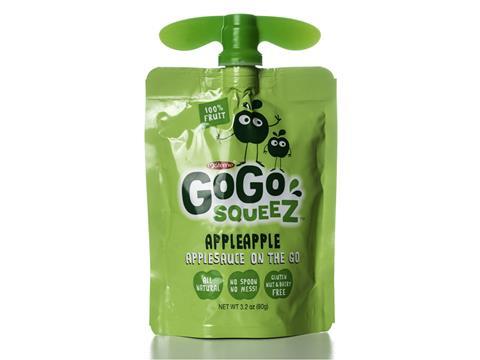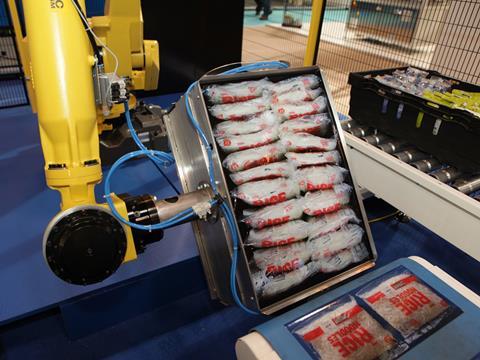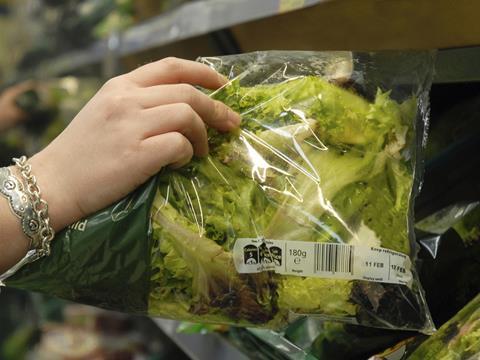
Flexibles are elbowing rigid packaging off the shelf. Paul Wilkinson, commercial & information systems manager at Pacepacker Services, explores the growth in films for food, the challenges, and the many ways in which robotics and intelligent automation can contribute to their success.
Next time you hear the smash of glass in the supermarket, or the thud of a box, can or plastic bottle hitting the ground, ask yourself whether what you heard was an accident. It could just be further evidence that flexible packaging for food is pushing more traditional formats off the shelf! On a slightly more serious note, food and drink research company Canadean* forecasts that global flexible packaging for food will reach 800 billion packs by 2018, overtaking rigid plastics, board, metal and glass for the first time.
Pouch packaging in particular, including standard and stand-up formats, has seen growth averaging around 5% a year, and has led the way for flexibles of other types. Research by Smithers Pira predicted that overall flexible packaging would grow at around 3.4% annually to reach a value of $248 billion (€217 billion) by 2020. Then again, monolayer and multilayer barrier flexible packaging is nothing new, so what is fuelling this sustained and accelerated growth spurt?

In part, this is to do with changes in the food we eat and how we eat it, the way it is prepared and sold. For example, to extend freshness more fruit and vegetables are being packaged, rather than being sold loose, and often that packaging will be a bag. At the same time, retailers have been expanding their food-to-go fixtures in response to consumer demand for convenient snacking.
Part of that convenience has come in the form of flexible packs which are easier to open and dispense. Today, hard-to-open bags and pouches are the exception rather than the rule. Just a few years ago, flexibles were not only seen as being the antithesis of user-friendly, they were commonly considered to be a ‘cheap’ alternative to more traditional containers.
A glance at the babyfood category shows how this has changed. The high-gloss, vividly-coloured graphics of stand-up pouches now dominate the shelf, with lids and pouring spouts delivering easy dispensing and reclosability. Today’s glass jars are typically relegated to the bottom shelf.
Advances in seal and barrier technologies for the pouch market are keeping food fresher for longer at all stages of the supply chain, contributing to a better shelf-life for both retailers and consumers. Even fresh produce achieves significantly longer life thanks to the combination of films and micro-perforation to optimise the in-pack atmosphere.
These shifts in consumer perceptions of flexible packaging have allowed retailers and brand-owners to benefit from the supply-chain advantages that these materials offer. Despite the light-weighting process that glass, metal, board and rigid plastics have seen, flexibles remain the lightest and, generally, the most space-efficient packaging for supply-chain logistics.

What flexibles gain in terms of reduced carbon footprint in production and logistics, compared with other formats, they had until recently lost in recyclability. But that, too, is changing. More monolayer films, such as polyethylene, are being collected, and this year, multinational brand-owner Unilever announced that it is working in Indonesia with German R&D institute Fraunhofer IVV, completing a plant to trial multilayer sachet recycling on a commercial scale.
Alongside the move towards flexibles, another trend in food and drink is the drive to automate downstream packing operations, often even at relatively low volumes.
So, what are the implications of flexible pack formats when it comes to automated handling?
Implications on automation
Rigid packaging is more likely to use robot pick-and-place with a gripper of some sort when being loaded into cases, trays or other secondary packaging. On the face of it, pouches would be ideally suited to vacuum end-effectors, and these are indeed often specified for this pack format. But there are limitations to this approach. Many vacuum systems will only grip a pouch on a flat side or face, and may not even achieve this if the contents are lumpy or irregular. Once the pack is gripped, it might be easy to place it flat inside a case, tray or crate, but what do you do if you want your pouches vertical for transit?
For fresh produce, especially, holes in the film may make any vacuum contact impossible or difficult to achieve. That is why it is so important to work with an automation supplier which can trial different options for robotic handling, taking the time to find the optimum solution for the entire range of packs coming down the customer’s line. For example, only pack-specific trials will highlight whether air creepage renders the use of vacuum end-effectors impossible, or whether this effect can be compensated for with different tooling or a more powerful vacuum.
Similarly, where different shapes and sizes of flexible packaging need to be handled, trials can show whether the same end-effector will cover all these variants or, if not, how manual or automated tooling changeovers can be kept to a minimum.

Addressing the challenges
Often, an automated solution originally designed for one type of product in flexible packaging will lend itself to solving problems specific to other categories. For instance, Pacepacker’s Shingle Tray Loader (STL) was first developed for the birdseed industry, but has since been applied to many types of human food. Flexible packs of loose or granular product will, literally, go ‘pear-shaped’ when held vertically for packing into a retail tray, case or box. This in turn limits the number of packs that can be fitted into the tray.
The robotic STL addresses this challenge by forming the collation horizontally from an infeed conveyor, using gravity to maximise the number of bags or pouches, before swivelling the completed collation to the vertical and loading it through ‘bomb doors’ into the waiting tray, case or box. This approach has been used on lines packing products such as flour, but also wet noodles, where horizontal stacking might lead to lower layers of product being crushed and damaged.
A further advantage of a system such as the STL is that different packs can be handled without needing to change the tooling. It demonstrates that, even where a manual operation packing pouches into an outer might at first glance appear difficult to automate, solutions can be found.
Robotic case loading will often replace manual packing and, even where end-of-line space is at a premium, our experience is that automated solutions can normally be engineered to fit. Of course, that long experience is equally valuable in tailoring case loading and other handling systems to rigid primary packaging of different kinds. But brand-owners planning to launch in – or move to – flexible formats can be reassured that there will be no shortage of automated options available for their own chosen type of packaging.




















